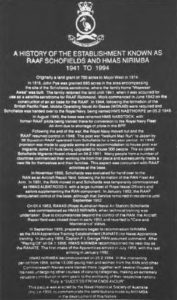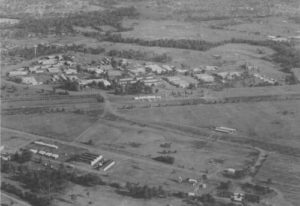On Saturday 3rd of November 2001, in overcast conditions, the Memorial Garden at the former HMAS NIRIMBA site, was formally dedicated. The service was conducted in front of some 150 ...
HMS Nabthorpe
HMAS Nirimba – End of an Era – 1993
The Defence Force Establishment at Quakers Hill, N.S.W. spent most of its life as part of the Royal Australian Navy (RAN). This is fitting since the first non-Aboriginal people to ...

